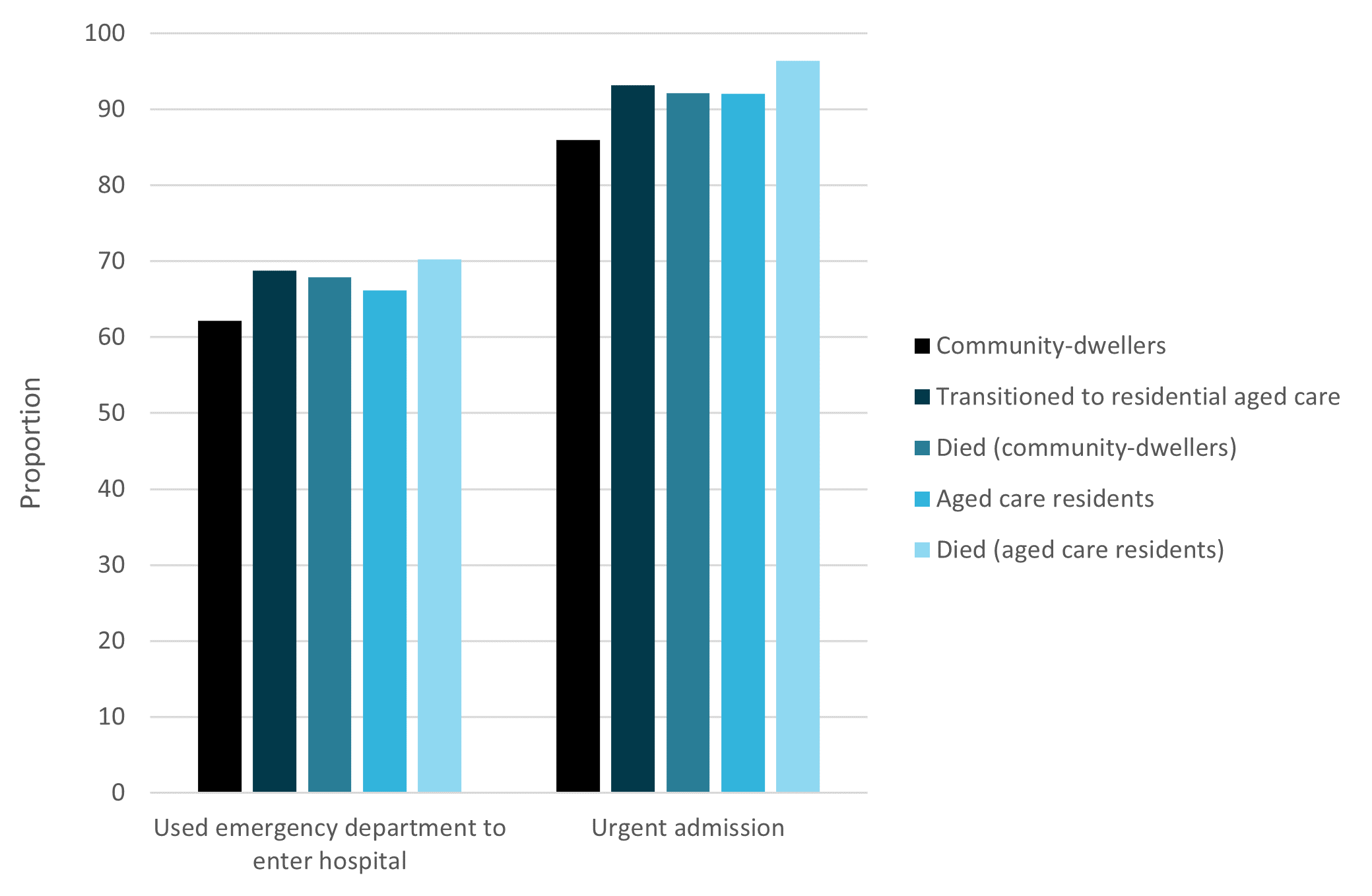Care required during stay
The number of episodes of care, the clinical complexity of care and type of care reflect the treatment patterns and needs of patients during their hospitalisation. Episodes with major complexity tend to have the highest healthcare costs.
People who transitioned to residential aged care and community-dwellers who died during their hospitalisation (or within 7-days of discharge) had more complex care needs and required more episodes of care compared with community-dwellers, aged care residents who died and aged care residents living with dementia.
Clinical complexity of care
Most people living with dementia (62%) had at least one episode of care classified as “major complexity” (rather than intermediate or minor complexity, Table S1.8).
The proportion of people who had at least one episode of care classified as major complexity was:
- 85% for people who transitioned to residential aged care,
- 76% for community-dwellers who died,
- 60% for community-dwellers,
- 58% for aged care residents who died,
- 56% for aged care residents had at least one episode of care classified as major complexity.
Clinical complexity of care is recorded for each episode of care for each person and is estimated using the Australian Refined Diagnostic Related Group (AR-DRG). For people that had more than one episode of care, the complexity of the most complex episode of care is reported.
Number of episodes of care
A new episode of care commences each time a person receives a different type of care, moves to a different ward, or moves to a different hospital. People who require more than one episode of care typically have more complex health problems requiring extended hospital care.
Most people living with dementia had one episode of care (73%), 19% had two episodes of care and 8% had three or more episodes of care (Table S1.9). The proportion of people who had three or more episodes of care was highest for people who then transitioned to residential aged care (26%) and lowest for community-dwellers (7%) and aged care residents (2%).
The high proportion of people who had three or more episodes of care, particularly among people who transitioned to residential aged care, highlights the importance of using linked data to examine the entirety of people’s hospital stays.
Types of care
Almost all people living with dementia used acute care during their hospitalisation (97%). The other most common types of care used by people living with dementia were geriatric evaluation and management (9%), maintenance care (7%) and rehabilitation care (6%, Table S1.10).
Figure 7 shows the distinct types of care used by change in usual residence or mortality. Key findings are that:
- People who transitioned to live in residential aged care more frequently accessed maintenance care (35%), geriatric evaluation and management (22%), and rehabilitation care (12%) compared with other people living with dementia.
- Community-dwellers who died were more likely to access palliative care (33%) compared with aged care residents who died (22%).
- Aged care residents were more likely to access acute care (99%) and less likely to access any other care type (<2%) compared with other people living with dementia.
Figure 7 Distinct types of care used by people living with dementia, by change in usual residence or mortality within 7-days of discharge

Note: Rehabilitation care for aged care residents who died has been combined with Psychogeriatric care, Mental health care or Other.
Source: AIHW NIHSI 2018–19, analysis of NIHSI.
Care type broadly reflects the nature of the clinical service that the person received during their care. Full descriptions of each care type are available (AIHW 2019). For people who had more than one episode of care and used more than one care type, each distinct type of care is reported.
References
AIHW (2019a) Hospital service–care type, code N[N], METEOR identifier: 711010, viewed 06 Jan 2023.


